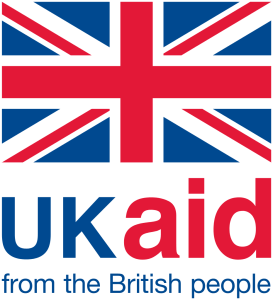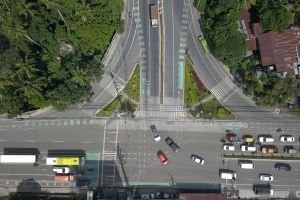Tajikistan
Supporting post-crash response capacity to identify priority investments
Overview
Featured GRSF Grant Activity: Assessment of post-crash response capacity to identify priority investments in Tajikistan, Kyrgyz, Lebanon & Egypt
With support of GRSF, the European Bank for Reconstruction and Development (EBRD) is working on identifying priority investments needed to improve the post-crash response in Tajikistan, Kyrgyz, Lebanon & Egypt.
By developing an in-depth study, the findings will identify and quantify priority investments, which may include post-crash response infrastructure, vehicles, equipment and training which will pave the way for future financial support in post-crash response measures and the unnecessary loss of life due to delays reaching casualties and prompt removal to emergency care.
These products will leverage in future investment in the above-mentioned areas and will open channels between governments and international finance institutions.
IDEAS IN ACTION ⌵︎
EASST and EBRD launch Toolkit to enhance effectiveness of post-crash emergency response in low- and middle-income countries
On May 6, 2021 the EBRD and the Eastern Alliance for Safe and Sustainable Transport (EASST), with support from UK Aid through the GRSF, launched in Dushanbe, Tajikistan, a new training toolkit with resources to enhance the effectiveness of post-crash emergency medical and rescue operations.
The toolkit was presented at a high-level meeting hosted by the EBRD and EASST partners the Young Generation of Tajikistan (YGT) where 50 key stakeholders including representatives from the Ministry of Internal Affairs, Ministry of Transport, and the Ministry of Health as well as other relevant agencies discussed post-crash vehicle collision response systems in Tajikistan – beginning from the point of the vehicle collision, taking in the full lifecycle of immediate post-crash response, emergency medical care, trauma care and victim rehabilitation.

The toolkit, which has been developed in partnership by the EBRD, EASST, FIRE AID, SharedAim, and the George Institute for Global Health UK, includes six easy-to-follow video animations covering the key stages of the post-crash response lifecycle. It has been designed as a helpful resource for joint planning, to assist all stakeholders in the management of post-crash response to save lives and improve outcomes for survivors. It covers basic best practice around the need for strategic planning and investment, good coordination, communication, equipment and training.
Post-Crash Response Animations ⌵︎
🚒 Emergency response
Effective post-crash response can make the difference between survival and death, preventing injuries becoming life changing.
📞 Good communication & dispatch
It is vital that the emergency call handling chain has proper investment, equipment and trained personnel to ensure the best outcomes for road victims.
🚧 Intervention at the scene
Joint planning is essential and the Rescue Plan should be implemented methodically. There should only be one person in charge, and one plan operating at any time.
📉 Coordination & data collection
The information collected at every crash is important. Good data shows an accurate understanding of road risk and emergency services’ needs.
👨💼 Equipment & training
Where possible, different emergency services should train together to replicate the realities of real-life incidents. This helps services work together with agreed methods and goals. It’s also beneficial to train community volunteers.
🤕 Caring for victims
Rehabilitation for victims reduces the impact of road injuries on their future lives. Both physical and mental rehabilitative care is often needed, as well as emotional support. Justice and prevention of future tragedies is also vital.
#50by30 ⌵︎
Commitment to improving post-crash response is a core part of global action to reduce road casualties by 50% by 2030. With GRSF support, the EBRD has been scaling up its activities in road safety, supporting its commitment towards the 2nd UN Decade of Action and Sustainable Development Goals, and examining its investments within its countries of operation to improve road safety standards and identify entry points associated with the five pillars which form the UN Global Plan.

Pillar 5, Post-crash Response, is vital to saving lives and meeting global casualty reduction targets. However, it is the Pillar that is most often overlooked by the donor community. It is hoped that the launch of the toolkit will be a starting point for dialogue and discussion aimed at identifying goals for improving post-crash services in Tajikistan.
Every country has different structures and challenges, so the toolkit is by no means ‘one-size-fits-all’ – it has been adapted to meet local needs in Tajikistan. But certain elements of good post-crash response apply everywhere, and we will be using this basis to release a global toolkit in the coming weeks.
» Check out the Twitter coverage of the events!
The Assessment of post-crash response capacity to identify priority investments, is supported by UK Aid through the GRSF.
The Key Impact
-

New training toolkit
with resources to enhance the effectiveness of post-crash emergency medical and rescue operations -

6 easy-to-follow videos
covering the key stages of the post-crash response cycle -

50+ stakeholders in Tajikistan
discussing vital post-crash vehicle collision response systems, including the Ministry of Transport, Health & Internal Affairs -

Baseline assessments
& identification of investment gaps in Tajikistan, Kyrgyz, Lebanon & Egypt







